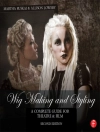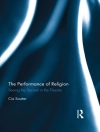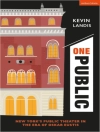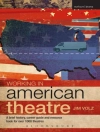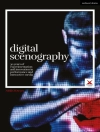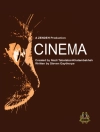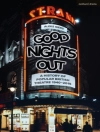The birth of cinema coincided with the heyday of the short story. This book studies the relationship between popular magazine short stories and the very early British films. It pairs eight intriguing short stories on cinema with eight new essays unveiling the rich documentary value of the original fiction and using the stories as touchstones for a discussion of the popular culture of the period during which cinema first developed. The short stories are by authors ranging from the notable (Rudyard Kipling and Sax Rohmer) to the unknown (Raymond Rayne and Mrs. H.J. Bickle); their endearing tributes to the new cinematograph chart its development from unintentional witness to entertainment institution.
Tabela de Conteúdo
Reading the Cinematograph: Introduction, Andrew Shail
Story 1: Our Detective Story (24 January 1897) by Dagonet [George R. Sims]
Chapter 1: George R. Sims and the Film as Evidence, Stephen Bottomore
Story 2: The Awful Story of Heley Croft (20 May 1899) by A.S. Appelbee
Chapter 2: Cinema Re-Mystified: A.S. Appelbee’s Technological Ghost Story, David Trotter and Chris O’Rourke
Story 3: Colonel Rankin’s Advertisement (December 1901) by Raymond Rayne
Chapter 3: The Great American Kinetograph: News, Fakery and the Boer War, Andrew Shail
Story 4: Mrs Bathurst (September 1904) by Rudyard Kipling
Chapter 4: ‘The Very Thing’: Rudyard Kipling’s ‘Mrs Bathurst’, Tom Gunning
Story 5: The Green Spider (October 1904) by A[rthur Henry] Sarsfield Ward, a.k.a. Sax Rohmer
Chapter 5: ‘Only from the Senses’: Detection, Early Cinema and a Giant Green Spider, Stacy Gillis
Story 6: Romantic Lucy (Summer 1911) by Alphonse Courlander
Chapter 6: ‘She Had So Many Appearances’: Alphonse Courlander and the Birth of the ‘Moving Picture Girl, Jon Burrows
Story 7: Love and the Bioscope: A Heart-Thrilling Story of a Deserted Bride (8 June 1912) by Mrs H.J. Bickle
Chapter 7: Melodrama, Sensation and the Discourse of Modernity in ‘Love and the Bioscope’, Lise Shapiro Sanders
Story 8; The Sense of Touch (December 1912) by Ole Luk-Oie [Ernest Dunlop Swinton]
Chapter 8: A visit to the cinema in 1912: ‘The Sense of Touch’, Andrew Higson
Sobre o autor
Professor Andrew Higson holds the Greg Dyke Chair in Film and Television Studies at the University of York. He was previously Professor of Film Studies at the University of East Anglia, where he taught for over 20 years.
Running through much of his work is a concern for questions of national and transnational cinema; he has written widely on British cinema, from the silent period to the present, and from contemporary drama to the heritage film.
His books include Waving the Flag: Constructing a National Cinema in Britain (1995) and English Heritage, English Cinema: The Costume Drama Since 1980 (2003; both Oxford University Press), and has edited two general surveys of British cinema history, Dissolving Views: Key Writings on British Cinema (Cassell, 1996), and British Cinema, Past and Present (co-edited with Justine Ashby; Routledge, 2000). A third edited book surveys the development of cinema in Britain in the silent period: Young and Innocent? The Cinema in Britain, 1896-1930 (UEP, 2002).
Co-edited with Richard Maltby ‘Film Europe’ and ‘Film America’: Cinema, Commerce and Cultural Exchange, 1920-1939 (UEP, 1999) was awarded the prestigious Prix Jean Mitry.


